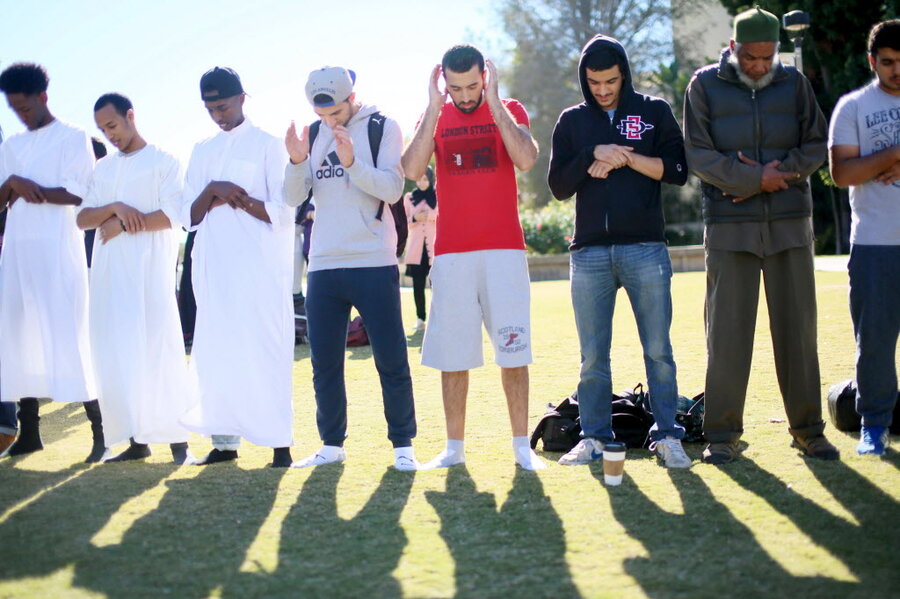Where Muslims are a learning experience
Loading...
Last Sunday, in a Thanksgiving ceremony, a group of students at Bowdoin College in Maine performed an unusual act – unusual, that is, in light of the American debate over accepting more Muslim refugees fleeing Islamic State. They held an interfaith service, focused on gratitude, with readings and prayers by Muslims, Jews, and Christians alike.
In their variety of faiths, college campuses may be the most diverse places in the United States, a country that is already the world’s most religiously diverse and also the most devout in the Western world. Yet as in much of the US, Muslim students on campuses are not widely welcomed. A recent survey by two professors, Alyssa Bryant Rockenbach and Matthew Mayhew, found only 46 percent of students say Muslims are accepted.
If Americans are ever to embrace the country’s Muslim minority or generously accept Muslim immigrants, a change in attitude will need to take root at colleges and universities. That is where tomorrow’s civic and religious leaders are being trained. Achieving a diversity of faiths on campus is not enough. Schools must also help students build trust and understanding between those of different religions.
Since 9/11, hundreds of schools of higher education have searched for ways to reduce the isolation of Muslim students and to prevent discrimination against them. In a few colleges, controversies have erupted after Muslims were given public space for Islamic prayers. In others, students and faculty have found ways to foster interfaith cooperation, such as the Bowdoin Thanksgiving service. At the University of Maryland, College Park, Muslim students recently invited non-Muslim students to wear a hijab for a day.
Since 2010, the White House has nudged schools to act through a program called Interfaith and Community Service Campus Challenge. And a Chicago-based organization, Interfaith Youth Core, has trained thousands of students on ways to resolve religious differences and work together for common goals.
One of the group’s techniques to help dispel misconceptions and shed light on different religions is to pair up students for quick discussions about each person’s faith (or nonfaith), much like speed dating.
Colleges that encourage students to engage with others of different faiths can help resolve the political debate over how to treat Muslims who wish to find refuge in America. A nation founded on the Pilgrim experience should know how.







